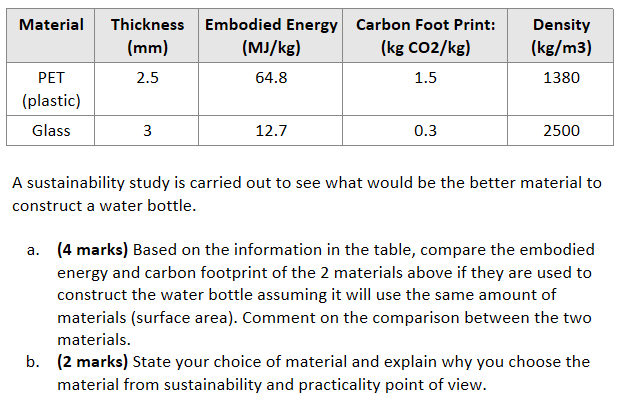Answered step by step
Verified Expert Solution
Question
1 Approved Answer
Material Thickness (mm) 2.5 Embodied Energy Carbon Foot Print: (MJ/kg) (kg CO2/kg) 64.8 1.5 Density (kg/m3) 1380 PET (plastic) Glass 3 12.7 0.3 2500 A

Step by Step Solution
There are 3 Steps involved in it
Step: 1

Get Instant Access to Expert-Tailored Solutions
See step-by-step solutions with expert insights and AI powered tools for academic success
Step: 2

Step: 3

Ace Your Homework with AI
Get the answers you need in no time with our AI-driven, step-by-step assistance
Get Started


